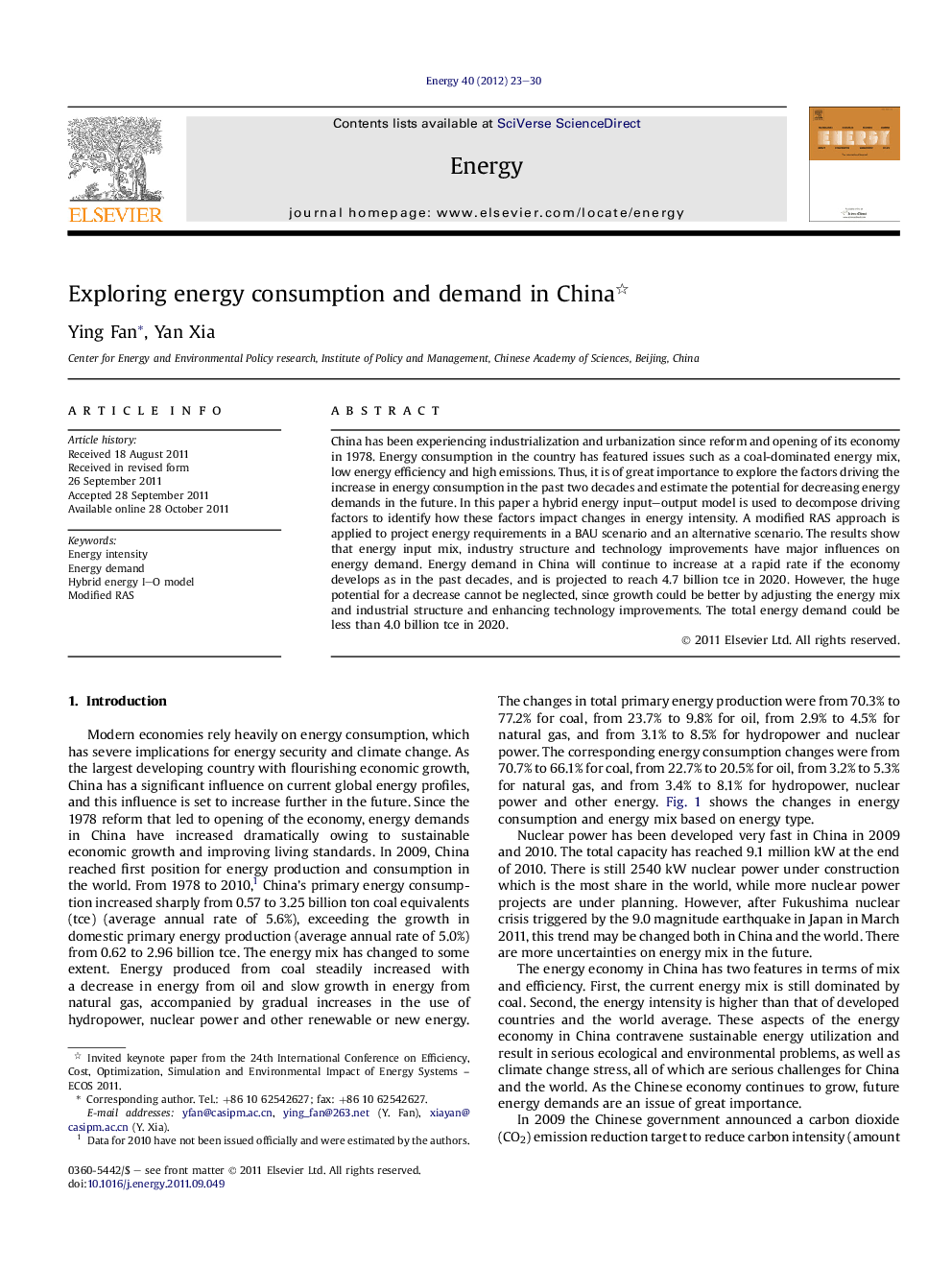| Article ID | Journal | Published Year | Pages | File Type |
|---|---|---|---|---|
| 1734073 | Energy | 2012 | 8 Pages |
China has been experiencing industrialization and urbanization since reform and opening of its economy in 1978. Energy consumption in the country has featured issues such as a coal-dominated energy mix, low energy efficiency and high emissions. Thus, it is of great importance to explore the factors driving the increase in energy consumption in the past two decades and estimate the potential for decreasing energy demands in the future. In this paper a hybrid energy input–output model is used to decompose driving factors to identify how these factors impact changes in energy intensity. A modified RAS approach is applied to project energy requirements in a BAU scenario and an alternative scenario. The results show that energy input mix, industry structure and technology improvements have major influences on energy demand. Energy demand in China will continue to increase at a rapid rate if the economy develops as in the past decades, and is projected to reach 4.7 billion tce in 2020. However, the huge potential for a decrease cannot be neglected, since growth could be better by adjusting the energy mix and industrial structure and enhancing technology improvements. The total energy demand could be less than 4.0 billion tce in 2020.
► In this paper a hybrid energy input–output model is used to decompose driving factors to China’s energy intensity change. ► A modified RAS approach is applied to project energy requirements in China. ► The results show that energy input mix, industry structure and technology improvements have major influences on energy demand. ► Energy demand in China will reach 4.7 billion ton in 2020 if the economy develops as in the past decades. ► There is a huge potential for a decrease of energy demand by adjusting the energy mix and industrial structure and enhancing technology improvements.
